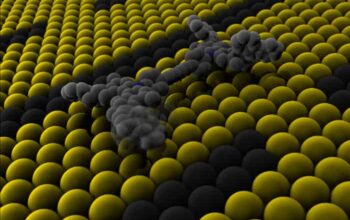In the burgeoning field of quantum information science, a pivotal concept emerges: the qubit. This fundamental unit serves as the bedrock for various applications, notably in quantum key distribution (QKD). But what exactly is a qubit, and why does it matter in the context of quantum key distribution? Consider this: is it possible that the very fabric of secure communication could be vulnerable, hinging on our understanding of these enigmatic quantum bits? To navigate through this intricate landscape, we must first unravel the essence of the qubit.
A qubit, or quantum bit, is the quantum analogue of the classical bit, which can take a value of zero or one. However, the power of a qubit lies in its ability to exist in a superposition of states, a phenomenon that allows it to simultaneously represent both zero and one. This characteristic can be likened to the spinning of a coin — while the coin is spinning, it is not definitively heads or tails, but rather a state embodying both possibilities until measured. This principle of superposition is central to quantum computing and QKD, as it exponentially expands the computational potential and security capabilities beyond classical systems.
Furthermore, qubits can exhibit entanglement, an extraordinary correlation that occurs when two qubits become interlinked in such a manner that the state of one instantly influences the state of the other, regardless of the distance separating them. This non-local connection raises intriguing questions about the nature of information and reality itself. If qubits are entangled, can a third party intercept this information without detection? This leads us to a core challenge in quantum key distribution: ensuring the integrity and confidentiality of the key exchange process amidst potential eavesdropping attempts.
To appreciate the role of qubits in QKD, it is essential to delve into the mechanics of this technology. Quantum key distribution employs qubits to facilitate secure communication between parties, commonly referred to as Alice and Bob, distilling a cryptographic key that ideally remains impervious to interception. The security of QKD is underpinned by quantum mechanics’ inherent uncertainty; if an eavesdropper, traditionally termed Eve, attempts to gain knowledge of the key by measuring the qubits, the very act of measurement disrupts their state. This disruption alerts Alice and Bob to potential breaches in their secure channel, enabling them to abort the transaction if necessary.
One prominent protocol in QKD is the BB84 protocol, proposed by Charles Bennett and Gilles Brassard in 1984. This protocol utilizes four distinct states of qubits to encode binary information: two states representing ‘0’ and ‘1’ and their respective states along different axes, commonly referred to as the Z and X bases, respectively. When Alice sends her qubits to Bob, they truly embody a complex interplay of superposition and entanglement, which underpins the robustness of the key they share. However, the interplay between quantum mechanics and practical implementations also presents substantial challenges.
Implementing QKD involves numerous technical hurdles. For instance, the efficiency of transmitting qubits over optical fibers can be impeded by loss and noise, necessitating precise calibration. Moreover, the creation and manipulation of qubits themselves, often utilizing photons or trapped ions, require sophisticated technology and control mechanisms. As researchers strive for advancements, the challenge persists: can we refine the systems governing qubit production and transmission without compromising the quantum principles that ensure security?
It is also crucial to consider the implications of noise and decoherence on qubit integrity. Environmental factors can disturb qubits, leading to errors that could compromise the secure communication between Alice and Bob. Quantum error correction techniques are an area of active research, striving to bolster the resilience of qubit states against such perturbations. How can developments in error correction enrich the landscape of QKD, ensuring even greater security and reliability?
The pivot from theory to practice in QKD also invites us to ponder the broader societal implications of quantum technologies. As governments and corporations invest in quantum infrastructure, the emphasis on qubits as the cornerstone of secure communications highlights both the potential and peril of this advancement. With adversaries potentially leveraging quantum computing for cryptographic attacks, traditional secure systems risk obsolescence, necessitating an urgent response from the cryptographic community.
The trajectory of quantum key distribution reflects not only the promise of sophisticated security measures but also the philosophical questions surrounding information transmission and secrecy. What does it mean for our understanding of security in an age where qubits facilitate instantaneous communication across vast distances? Is the mere existence of secure quantum channels enough to assuage our concerns over surveillance and privacy? These inquiries invite a deeper reflection on the intersection between technology, ethics, and society itself.
In conclusion, the qubit is more than just a quantum bit; it stands as the linchpin in the tale of quantum key distribution. Through its properties of superposition and entanglement, qubits enable a new paradigm of secure communication, one that challenges traditional views of information security. Yet, as we navigate this newfound landscape, we must remain vigilant and inquisitive, continuously questioning the nature of qubits, their implementation, and the broader implications of our quantum future. Can we envision a world where quantum keys safeguard our digital existence, or will the challenges they present lead us to an uncharted abyss?









